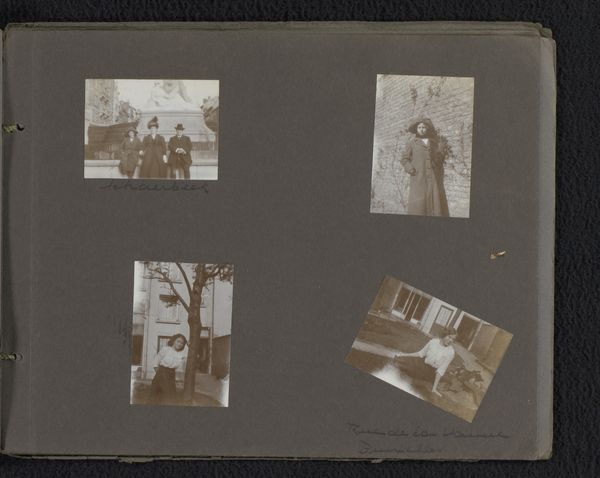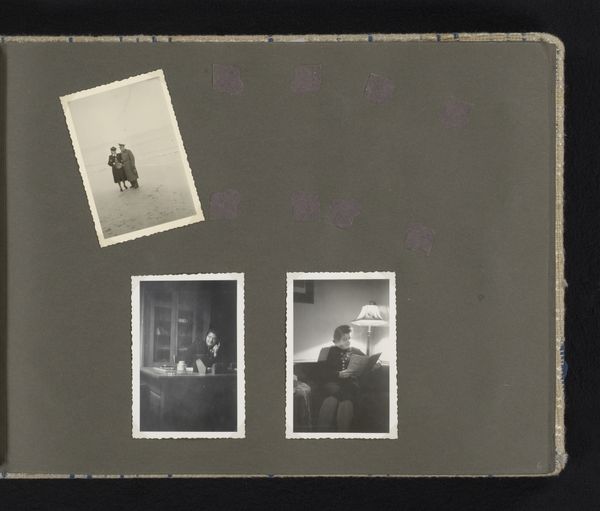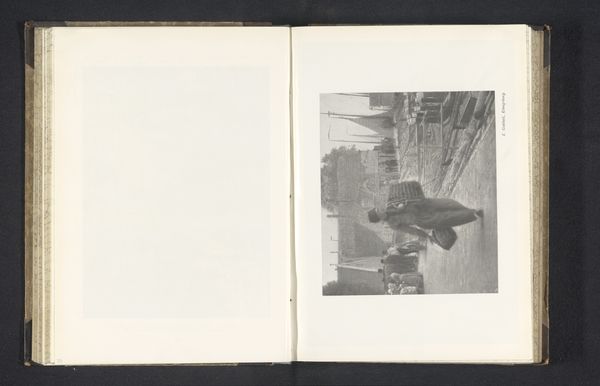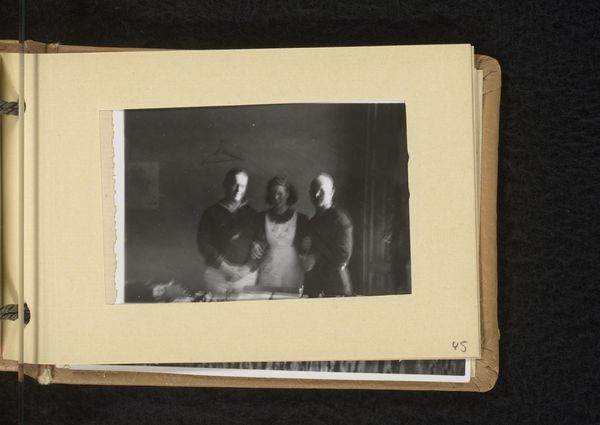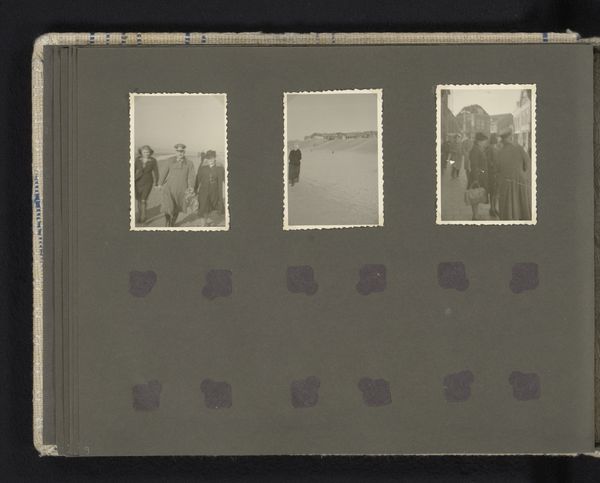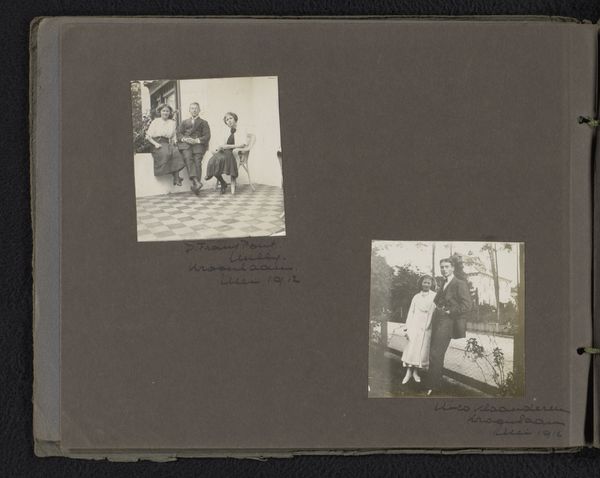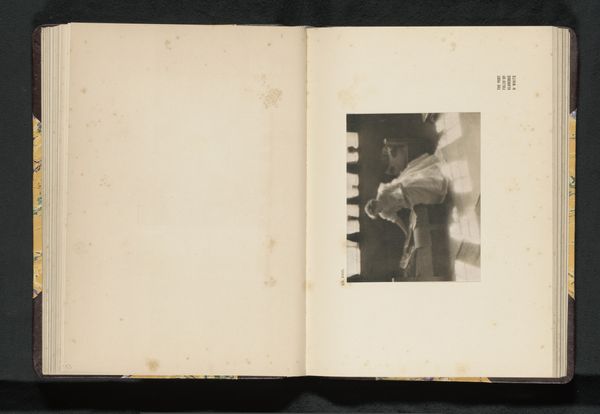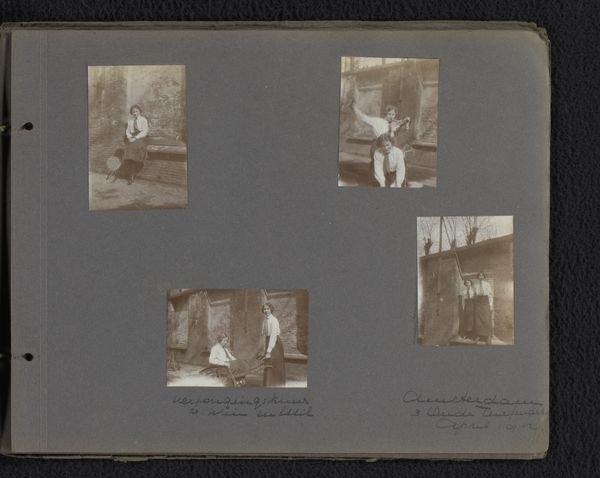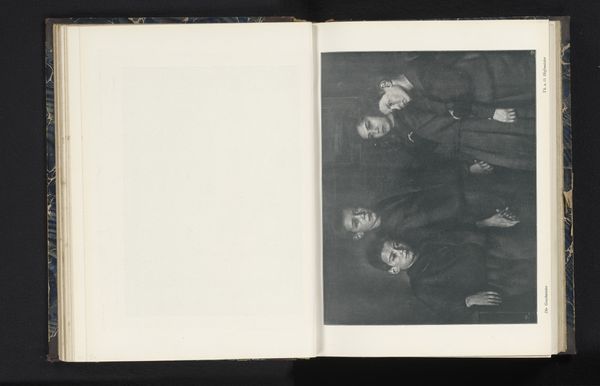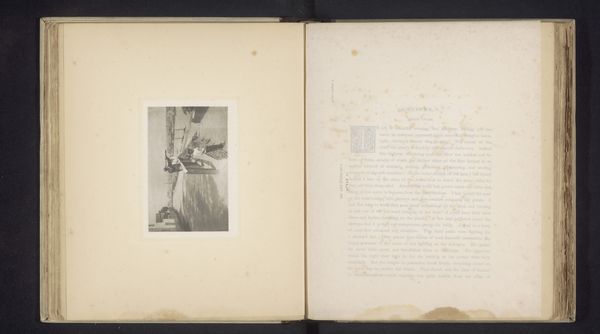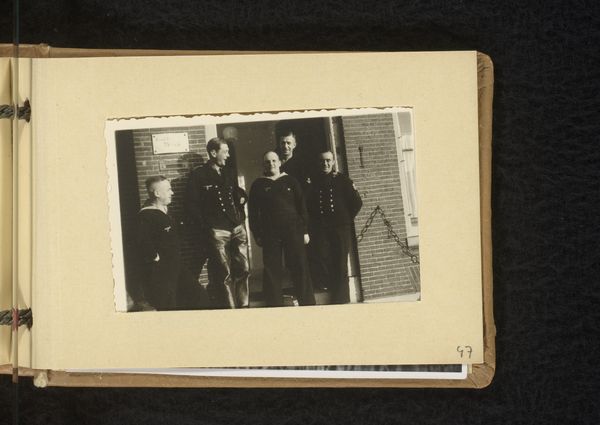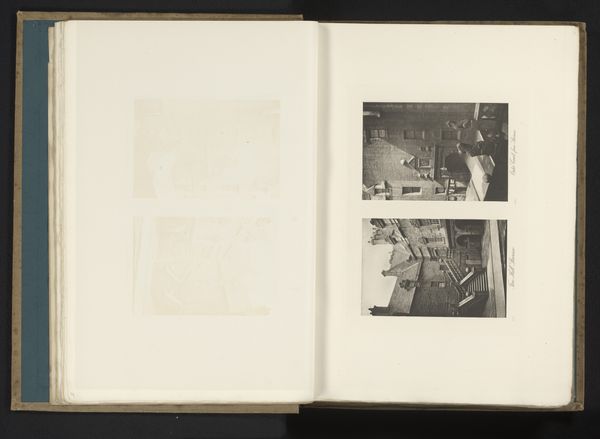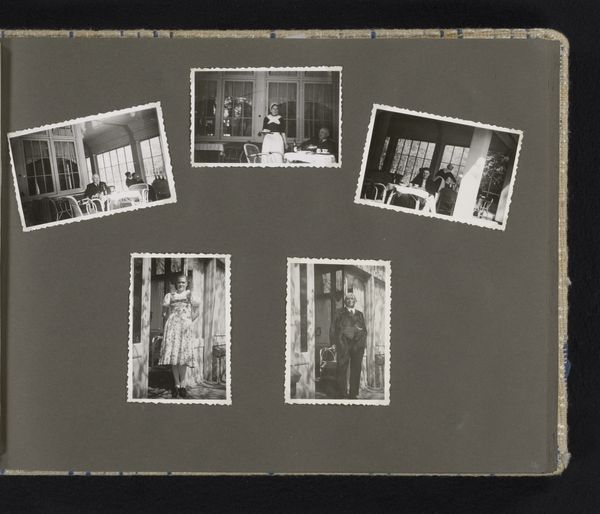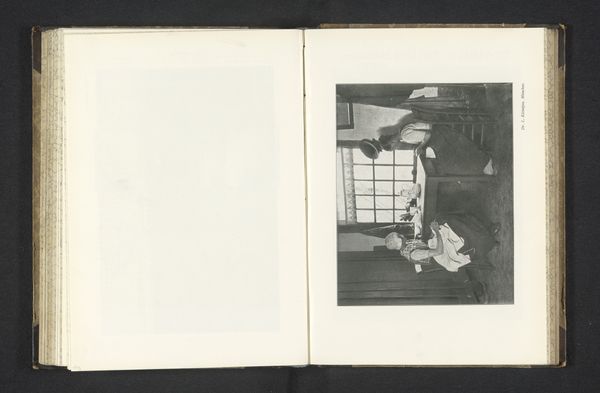
photography, gelatin-silver-print
#
portrait
#
photography
#
group-portraits
#
gelatin-silver-print
#
modernism
#
realism
Dimensions: height 60 mm, width 90 mm, height 85 mm, width 120 mm
Copyright: Rijks Museum: Open Domain
Curator: This gelatin silver print, dating from 1940 to 1943, is simply titled "Staande militairen," or "Standing Military Men." It's currently held here at the Rijksmuseum. Editor: There’s a striking solemnity about this group portrait. The high contrast lends it a certain severity, doesn't it? They appear young, vulnerable even, but attempt a certain rigidity through their posturing. Curator: The material is fundamental to understanding the print's historical value. Gelatin silver prints, widely used during this period, provided a cost-effective way to produce photographic images, emphasizing accessibility and the proliferation of visual documentation. I wonder what photographic paper was used, its origin could provide insights into available material during war. Editor: Absolutely. The materiality also contributes to its social significance. Knowing the historical moment informs how we interpret their uniforms, the very symbol of national identity and perhaps forced conformity, while the use of black and white could be seen to flatten complexities. What were these men thinking? The lack of colour creates a barrier to understanding the individuality that existed behind such constructed concepts of "military". Curator: Interesting. Thinking about that standardization, consider the dark uniforms. Sourced during wartime and subject to scarcity, mass-produced, they represent a clear break from earlier tailored military attire and also point to limited and rationed material. What narratives of production do these garments hold? Editor: It's tempting to apply a post-colonial lens here too. Considering who were these soldiers fighting, whose interests did their enforced uniformity serve? What about race and social class? I also keep wondering if these men were volunteers or conscripted. What choices did they really have? Curator: Good question. There is something undeniably compelling about understanding their social class given how crucial class relations were at that period and about photography itself. Gelatin silver printing transformed photography by allowing easier and faster developing. Did that easier production also transformed visual literacy among all social classes? Did it changed art consumption too? Editor: Ultimately, this photograph challenges us to remember the individual stories within the broader sweep of history, pushing us to confront the multifaceted nature of identity and political action. Curator: Precisely, analyzing this work through the lens of material constraints reminds us of the labor involved in even seemingly simple images, and also reminds us to ask about available materials at times of conflict. It gives an idea of what a 'war economy' looks like.
Comments
No comments
Be the first to comment and join the conversation on the ultimate creative platform.
